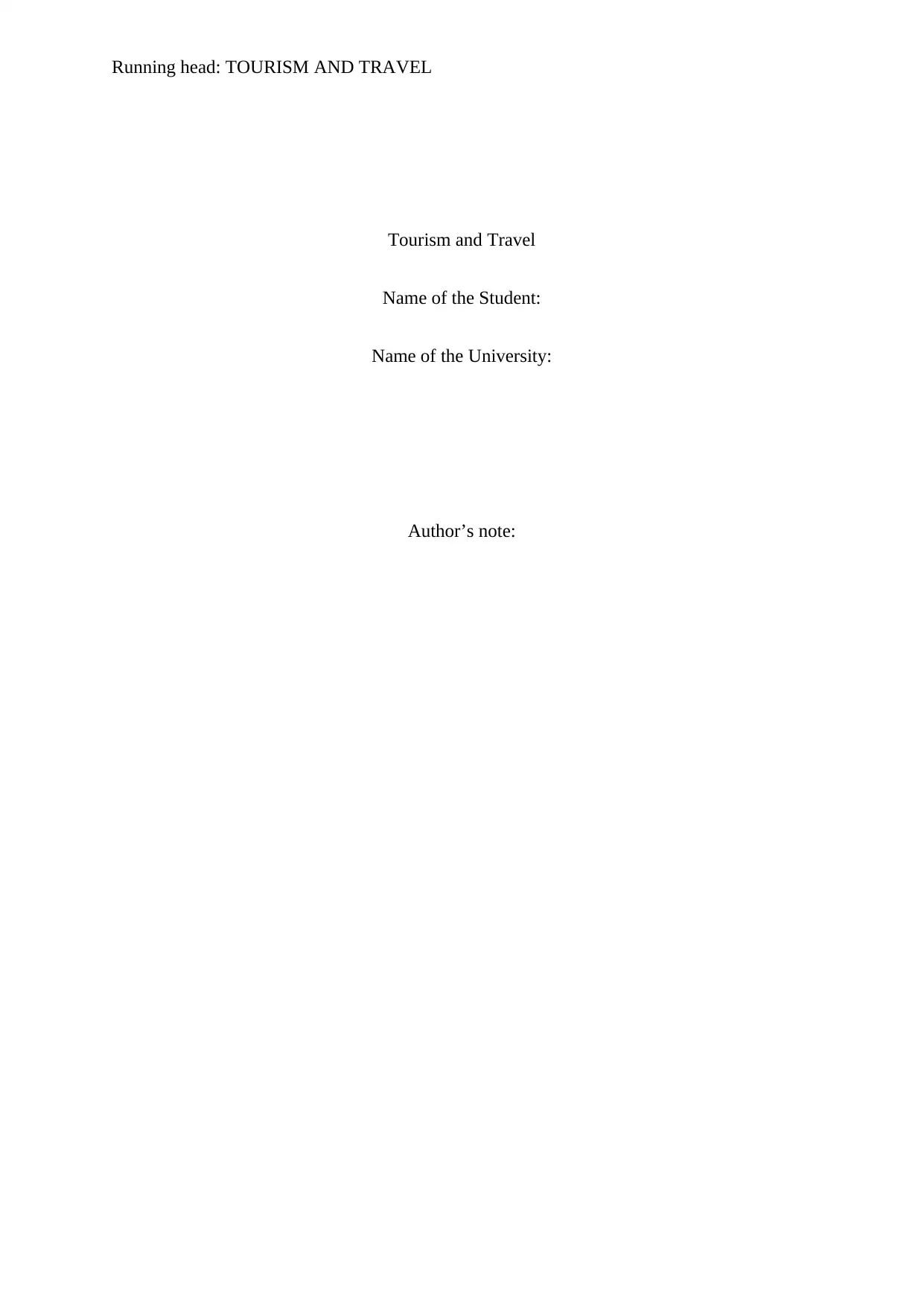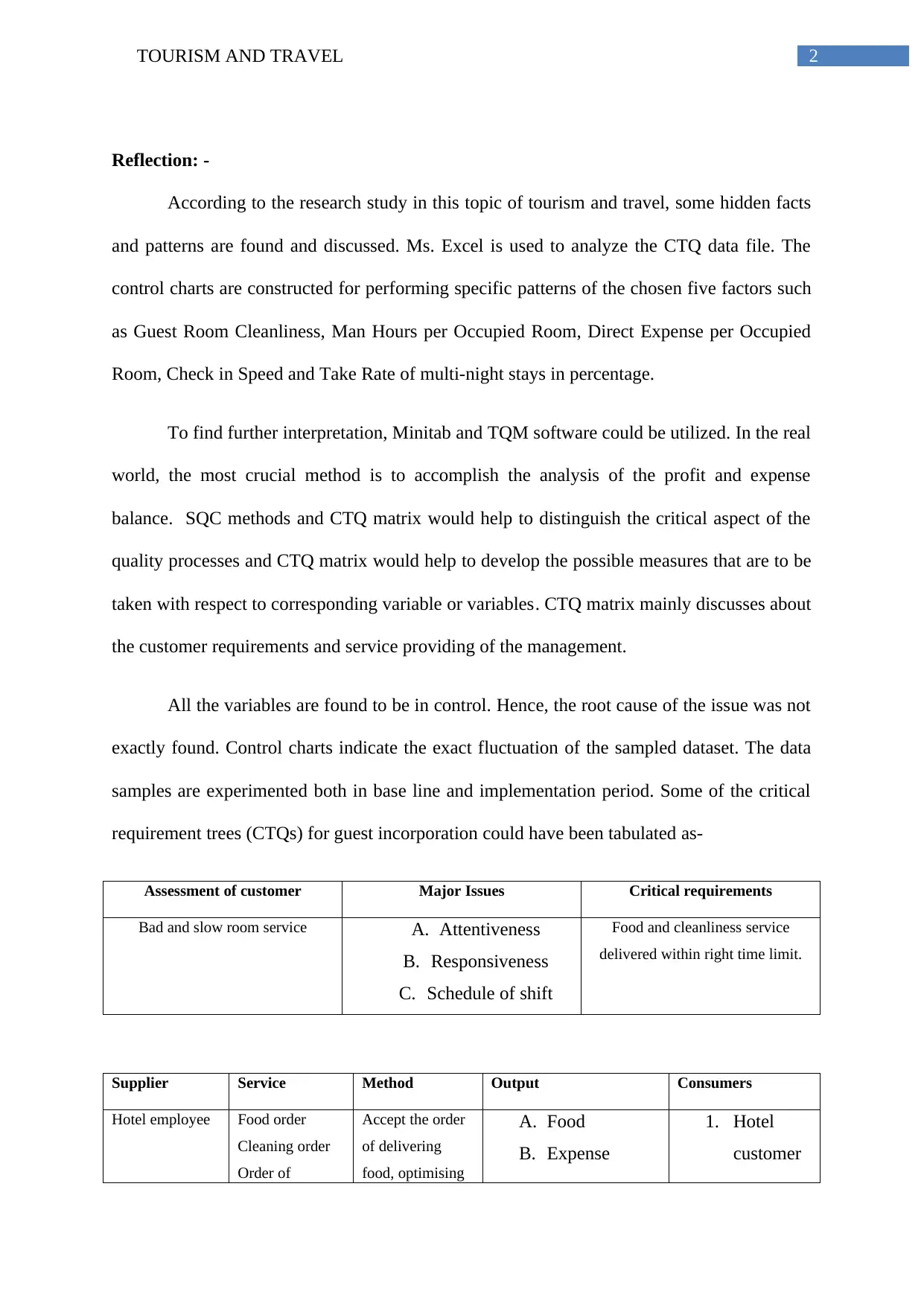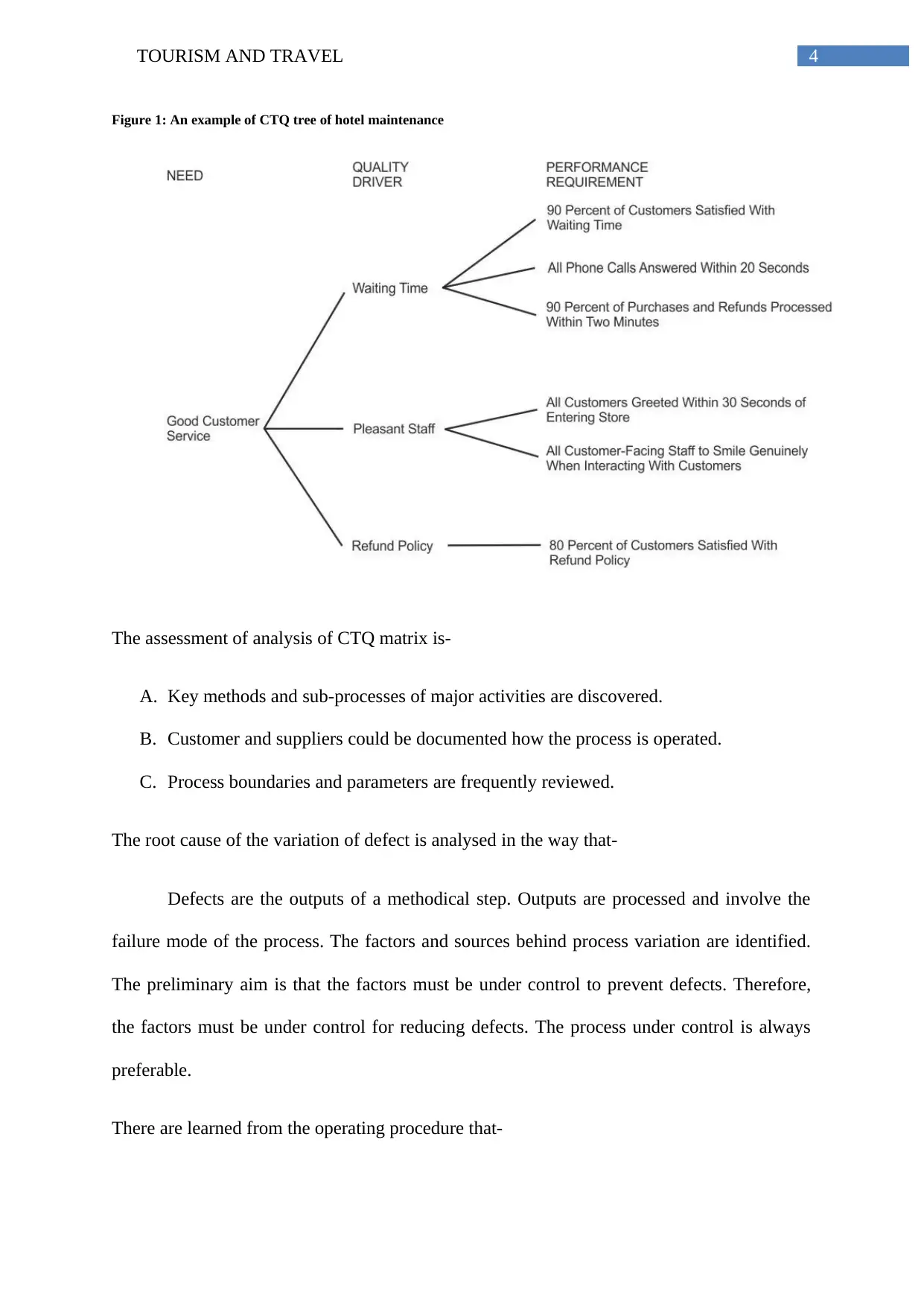Improving Tourism & Travel: Application of CTQ Matrix & SQC
VerifiedAdded on 2023/06/15
|7
|995
|228
Report
AI Summary
This report provides an analysis of tourism and travel operations using the CTQ (Critical to Quality) matrix and SQC (Statistical Quality Control) methods. The analysis utilizes Ms. Excel to examine a CTQ data file, focusing on factors like guest room cleanliness, man-hours per occupied room, direct expenses, check-in speed, and multi-night stay rates. The report discusses the benefits of using a CTQ matrix, including identifying key methods, sub-processes, and root causes of variations. It also explores how CTQ trees can enhance customer service by identifying critical requirements, quality drivers, and performance requirements. The analysis indicates that all variables are currently in control, and the report suggests further investigation with more experimental factors and larger sample sizes to pinpoint specific root causes of service irregularities. Ultimately, the report emphasizes the importance of data-driven investigations and controlled processes for maintaining and improving service quality in the tourism industry, supported by references to relevant resources.
1 out of 7









![[object Object]](/_next/static/media/star-bottom.7253800d.svg)